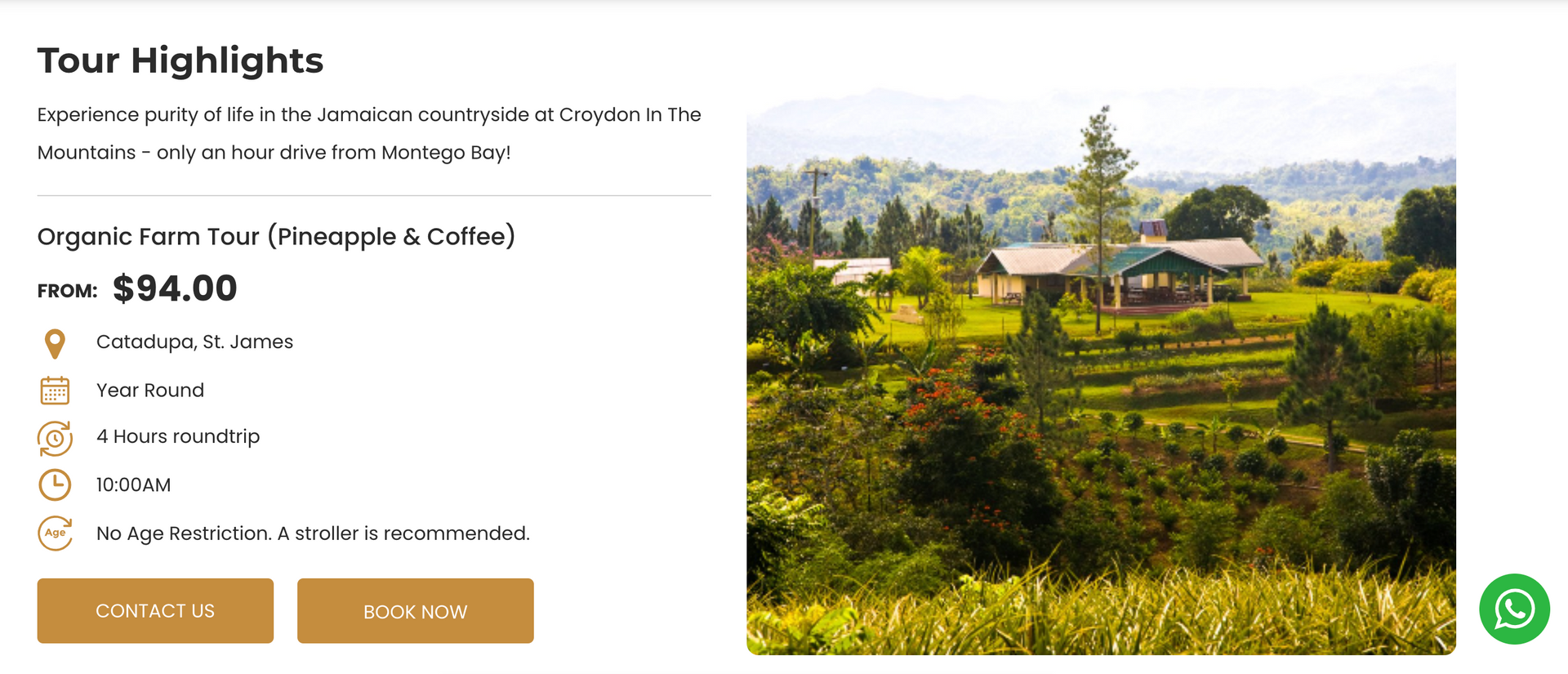Beginner's Guide to Google Ads for Tour Operators
In the travel and tourism industry, it's essential for businesses to employ effective marketing strategies to stand out and attract potential customers. There are many digital marketing options to implement, and one strategy that has proven to be highly impactful is utilizing Google Ads.
You’ve probably heard of Google Ads (such as PPC ads | Pay-Per-Click); however, you may have thought in the past that it's too much of an investment or that you just don’t know how to run them effectively. If that’s you, keep reading!
In this blog article, we'll explore how you and other travel and tourism companies can leverage Google Ads to enhance online visibility, connect with your target audience, and ultimately drive business growth.
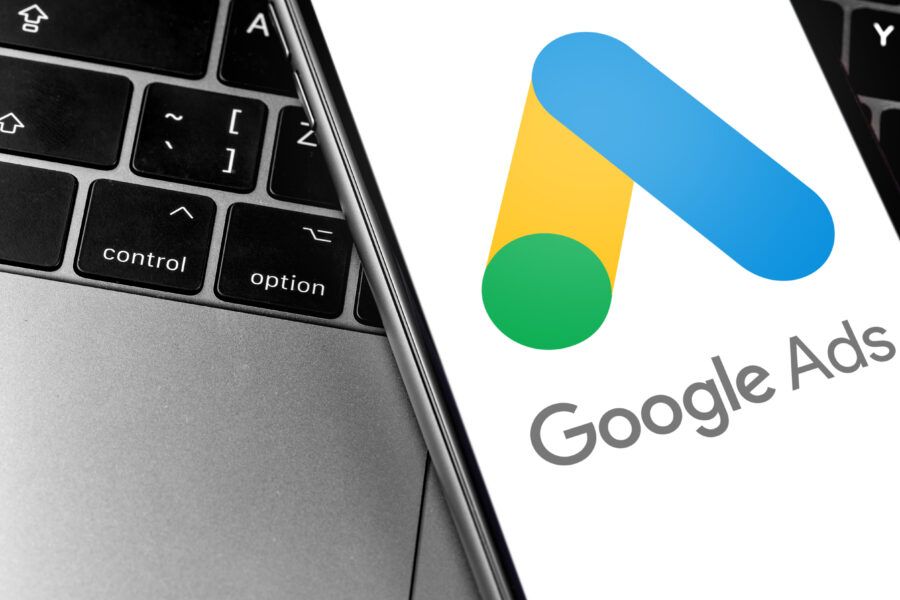
Understanding Google Ads
Google Pay-Per-Click Ads operates on a simple yet powerful principle: advertisers (you) pay a fee each time a user clicks on the advertisement. This model allows businesses like yours to "buy" visits to the website, making it an efficient way to attract relevant traffic and potential customers.
With Google Ads, advertisers have precise control over who sees your ads, thanks to targeting options based on keywords, demographics, interests, and more. This level of precision targeting ensures that ads are shown to users who are most likely to be interested in the products or services being offered, maximizing the effectiveness of the advertising campaign.
By leveraging the extensive data and analytics provided by Google Ads, you can continuously optimize your campaigns to reach a desired audience and achieve your marketing objectives.
As you can see in the image below, Google Ads, such as Pay-Per-Click, appear near the top of search results, capturing the majority of people's attention. This means that even small companies can compete against larger ones and even OTAs.
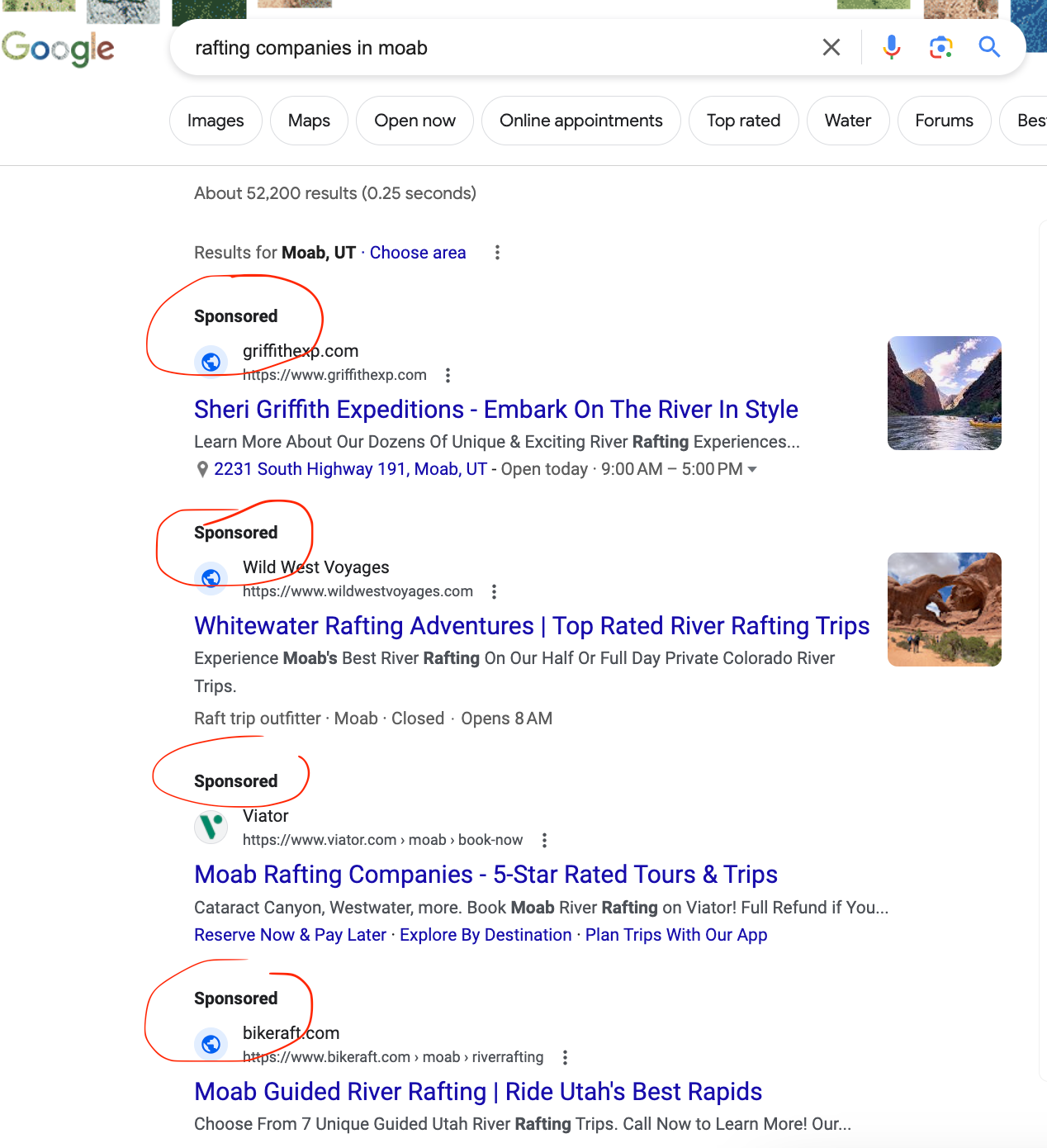
Benefits for Travel and Tourism Companies
Running Google Ads offers tour operators the advantage of essentially being able to ‘pay to play’. Unlike many other marketing practices, such as search engine optimization, Google Ads provides the opportunity for quick results. If you need to book tours now, running ads can lead to quicker leads. However, the benefits extend beyond immediacy:
Broad and Targeted Reach: Google Ads allows tour operators to target a global audience or specific demographics, offering the flexibility to reach potential travelers wherever they may be.
Enhanced Online Visibility: By appearing alongside search results, Google Ads increase the likelihood of attracting clicks and visits, surpassing organic search results and competitor listings, thereby enhancing your online presence.
Building Brand Recognition: Even if users don't immediately click on the ad, the repeated visibility of the brand name and offerings contributes to building brand awareness and trust over time, crucial for tour operators looking to establish themselves in a competitive market.
Cost Control and Measurable ROI: With control over budget and access to detailed analytics, you can effectively measure the return on investment. This empowers tour operators to adjust strategies for optimal results, ensuring that the advertising budget is utilized effectively.
Disadvantages of Google Ads
Alright, not that we’re here to discuss why you shouldn’t run paid ads on Google, it’s essential to have the right expectations, as they aren’t for everyone, and we’ll be the first to say so! So let’s dive into a few disadvantages.
The first thing we mention to tour operators is that managing Google Ads can be complex, especially for those new to the platform, requiring a solid grasp of keywords, ad copywriting, bidding strategies, and campaign settings. Without expertise, you may struggle to maximize the effectiveness of your ads. Then, after running the campaigns for a few weeks and not seeing results, you’ll think you’re just wasting money and probably never run Google Ads again. However, in fact, they just weren’t run properly.
Additionally, Google Ads should be part of a comprehensive marketing strategy, ensuring consistency across channels like social media, email, and SEO. Without cohesion, you and other operators risk diluting the brand message and missing opportunities to engage effectively with your audience. Check out our other
tour operator marketing guides that specifically talk the other channels.
Cost considerations are crucial, as bidding on competitive keywords and targeting specific demographics can drive up expenses. The competitive nature of the travel industry further complicates matters, with operators vying for attention in a crowded marketplace.
Despite these challenges, with careful planning, ongoing optimization, and a commitment to learning, companies in the tourism and travel industry can overcome Google Ads' disadvantages and harness its potential to drive meaningful results for your business.
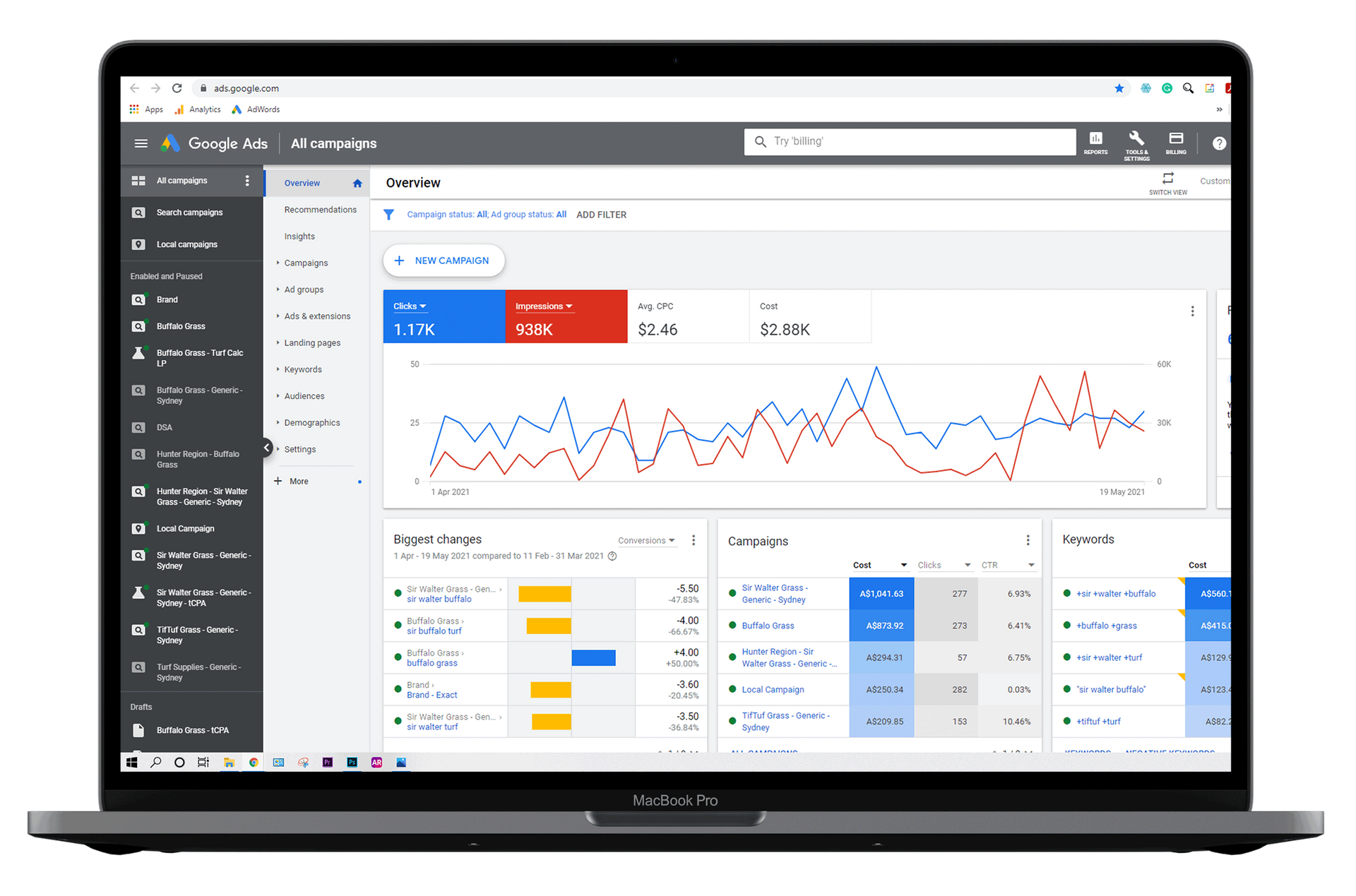
Getting Started with Google Ads
1. Create an Account: Visit the Google Ads website and follow the signup process to create an account. Provide necessary information such as company name, website URL, and contact details.
2. Set Up Business Information: Once the account is created, input business information including company name, website URL, and contact details. This helps tailor the advertising experience to the specific needs of the tour operator.
3. Craft Ad Content: Develop compelling ad content that highlights the unique selling points of the tours offered by the operator. This includes writing attention-grabbing headlines and engaging descriptions.
4. Select Relevant Keywords: Choose relevant keywords that potential customers are likely to use when searching for travel-related services. Keyword selection is crucial for ensuring that ads appear to users who are actively seeking tour packages.
5. Define Targeting Preferences: Specify demographics, interests, and locations to effectively target potential customers. This ensures that ads reach the right audience and maximize the chances of generating leads and bookings.
Creating Compelling Ads
Crafting compelling ads is a fundamental aspect of leveraging Google Ads effectively for tour operators. These ads serve as the digital storefront, enticing potential customers to engage with the offered tours.
Essential elements include a captivating headline that grabs attention, a clear and concise description that communicates the tour's unique value proposition, and the integration of relevant keywords to ensure visibility to the right audience.
Important information, including tour duration, pricing, and any age restrictions, should be provided to facilitate informed decision-making.
A compelling call-to-action will prompt users to take the next step, whether it's booking the tour, exploring further details, or contacting the operator for inquiries.
Also, you should ensure that your ads direct users to a well-designed landing page that seamlessly aligns with the ad's content. This landing page should provide further information about the advertised tour, maintain the same visual theme, and reinforce the call-to-action from the ad.
By carefully incorporating these elements into your ads, you can create engaging and persuasive advertisements that drive traffic, generate leads, and ultimately contribute to the success of the Google Ads campaigns.
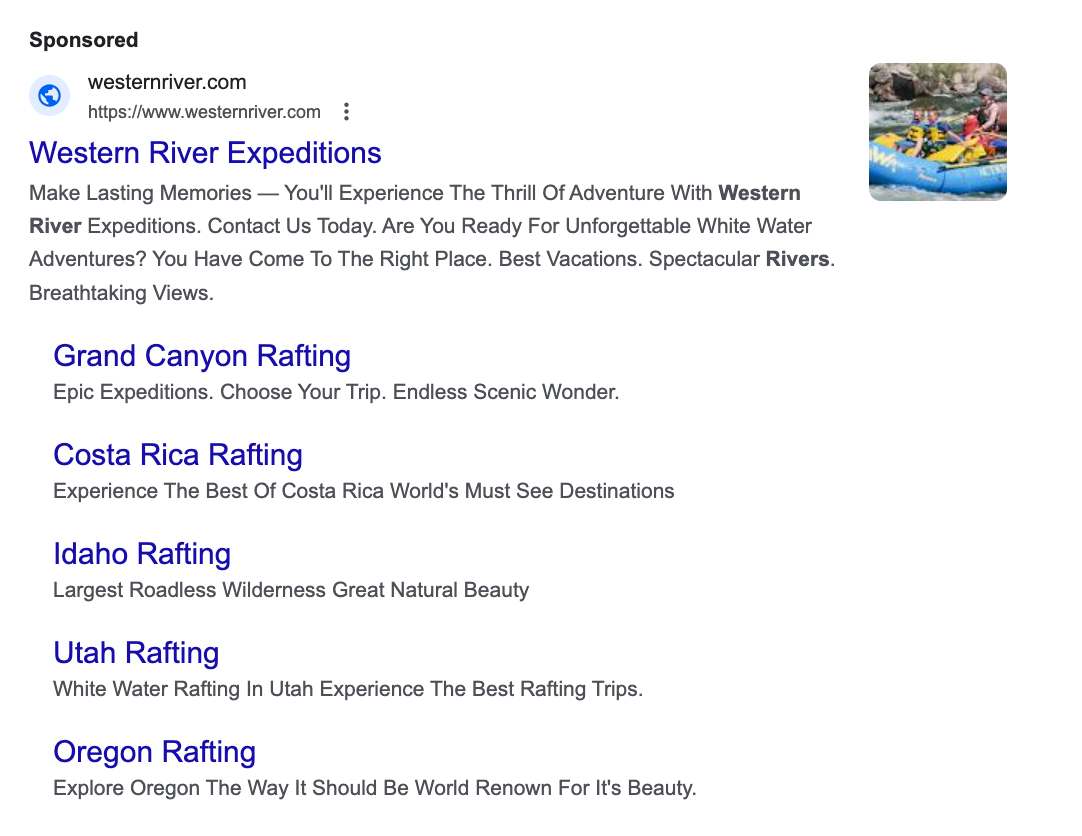
Search vs. Display Advertising
Google Ads offer two primary types of advertising: search and display. Search advertising targets users who are actively searching for specific information, such as travel destinations or tour packages. These ads appear alongside search results on Google's search engine results page (SERP), allowing tour operators to capture valuable moments of user intent and connect with potential customers at the right time and place. PPC ads are search ads.
On the other hand, display advertising takes a broader approach, reaching users based on their interests, browsing behavior, demographics, and online activity. These ads can appear on a vast network of websites, mobile apps, and online platforms visited by the target audience. Display ads come in various formats, including banner ads, native ads, video ads, and interactive rich media ads, offering tour operators the opportunity to capture attention and generate brand awareness in visually engaging ways.
While search advertising excels in precision targeting and direct relevance to user queries, display advertising is effective in reaching users during different stages of the customer journey. Display ads can spark interest, raise awareness, and drive consideration among users who may not be actively searching for tours but are still potential customers interested in travel and leisure activities.
We suggest running both search and display. Usually less of your budget will be spent on display.
Advertisement Budgeting
Effective advertisement budgeting is essential for tour operators managing Google Ads campaigns. This process involves defining clear objectives, understanding costs and profit margins, considering seasonality, and researching keyword costs. Starting with a test budget and setting daily or monthly limits are prudent approaches.
By allocating resources strategically and adjusting budgets based on performance metrics, you can maximize the impact of your advertising efforts. Thorough research and careful planning ensure that your expenses are optimized to achieve business goals, whether it's increasing bookings, driving website traffic, or raising brand awareness. Ultimately, effective budgeting contributes to the success of Google Ads campaigns for tour operators.
Measuring Success and ROI
Measuring the success and return on investment (ROI) of Google Ads campaigns is crucial for tour operators to optimize advertising strategies effectively. After launching a Google Ad, continuous monitoring of its performance is essential to ensure that resources are allocated efficiently and goals are met. Key metrics to track include impressions, which indicate the number of times the ad is displayed to users, and click-through rate (CTR), which measures the percentage of users who click on the ad after seeing it.
Conversions and conversion rate are also essential metrics, as they indicate the number of desired actions taken by users after clicking on the ad, such as booking a tour or submitting a form. Understanding the cost per click (CPC) and cost per conversion provides insight into the efficiency of advertising spend and helps optimize budget allocation.
Quality score, ad position, and search terms report are additional metrics that offer valuable insights into the performance of Google Ads campaigns. Quality score evaluates the relevance and quality of ads, keywords, and landing pages, influencing ad placement and cost-per-click. Ad position indicates the placement of the ad on the search engine results page (SERP), affecting visibility and competitiveness. Analyzing the search terms report helps identify relevant keywords, negative keywords, and opportunities for expansion.
Ultimately, calculating ROI involves comparing the cost of the ads to the revenue they generate. By diligently tracking these metrics and analyzing campaign performance, tour operators like you can make informed decisions to optimize Google Ads campaigns, maximize ROI, and achieve business objectives.
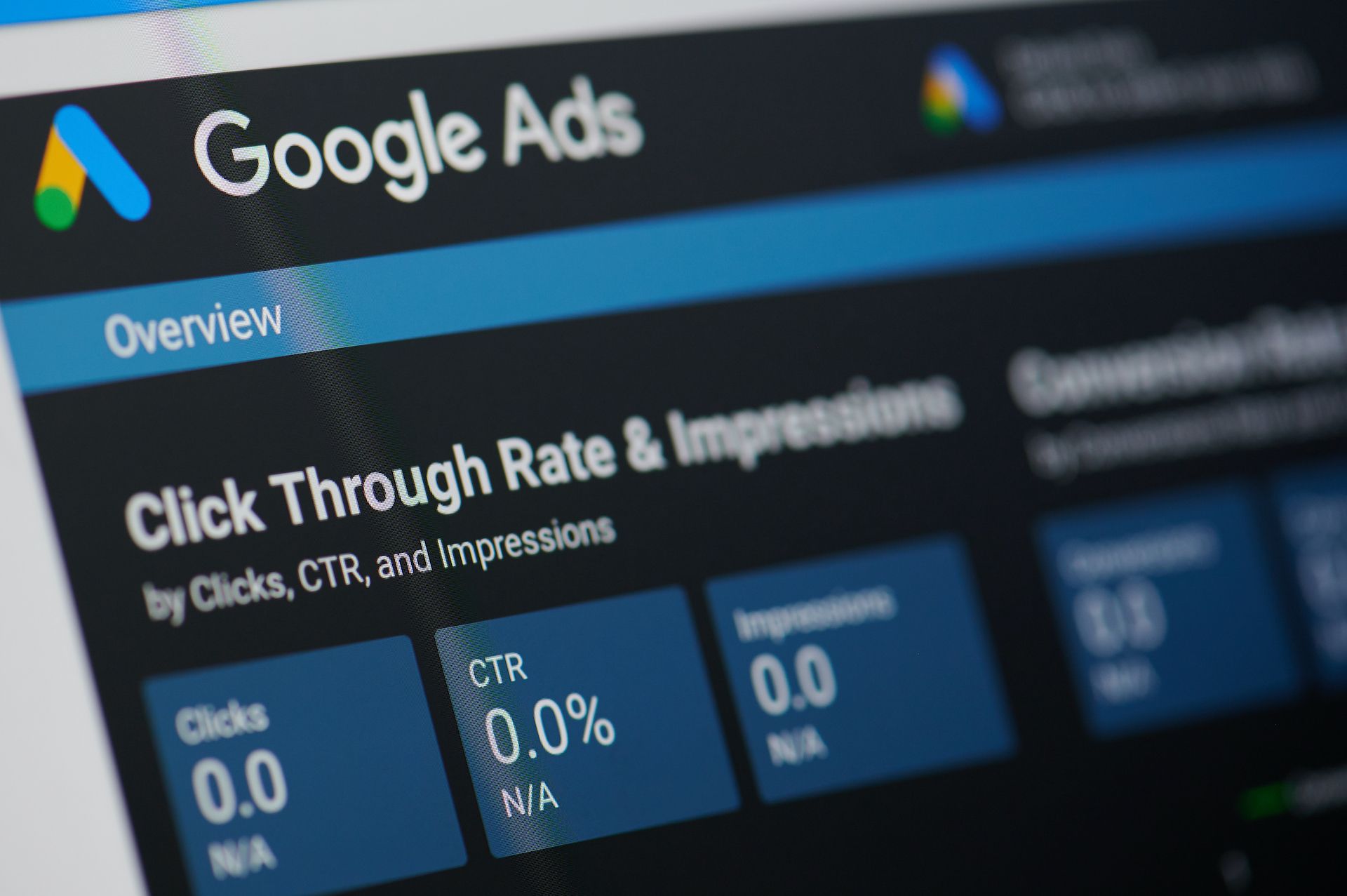
Stay Ahead of the Curve
Google Ads offer travel and tourism companies a powerful tool to enhance online visibility, connect with a target audience, and drive business growth. By understanding how to effectively leverage Google Ads and measure their impact, companies like yours can maximize marketing reach and achieve business objectives in today's competitive digital landscape. Are you interested in having experts run your Google Ads? Schedule your free discovery call today to witness the power of our expertise firsthand!
Are you ready to transform your tour operator marketing?
This is a paragraph. Writing in paragraphs lets visitors find what they are looking for quickly and easily.
This is a paragraph. Writing in paragraphs lets visitors find what they are looking for quickly and easily.
This is a paragraph. Writing in paragraphs lets visitors find what they are looking for quickly and easily.
This is a paragraph. Writing in paragraphs lets visitors find what they are looking for quickly and easily.
This is a paragraph. Writing in paragraphs lets visitors find what they are looking for quickly and easily.
Jane Faber, New York
This is a paragraph. Writing in paragraphs lets visitors find what they are looking for quickly and easily.
This is a paragraph. Writing in paragraphs lets visitors find what they are looking for quickly and easily.
Jane Faber, New York
Jane Faber, New York
Sign Up For Our Newsletter
Copyright ©2024 Resmark Systems, LLC. All rights reserved.

